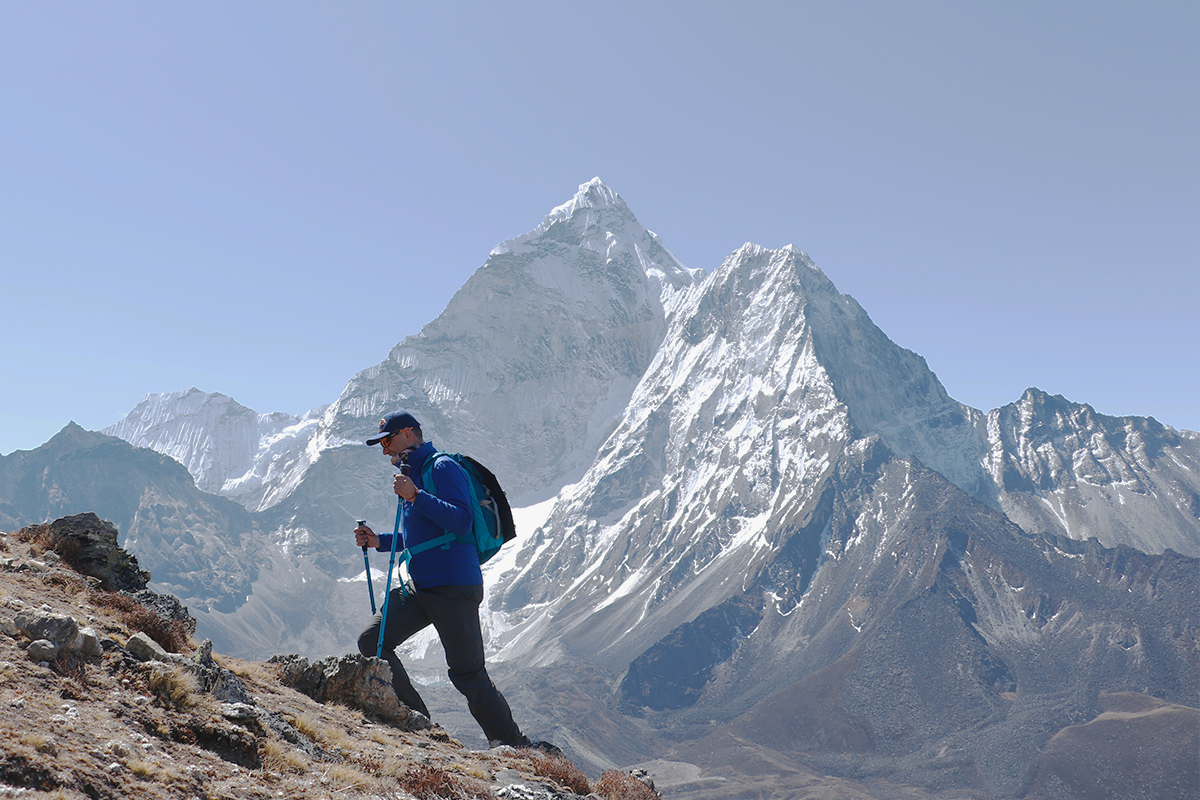Everest Base Camp Trek in March
March marks the beginning of the spring season in Nepal, making it an excellent time to embark on the Everest Base Camp (EBC) trek. Due to this fact, the cold winter months that took place in the winter begin to subside as the weather starts getting warm and favorable for the trekkers. The temperature ranges from 5°C to 10°C (41°F to 50°F) at lower altitudes in this month, although the higher altitudes can be cold; temperatures range averagely from -5°C to 5°C (23°F to 41°F) during the morning and evenings.
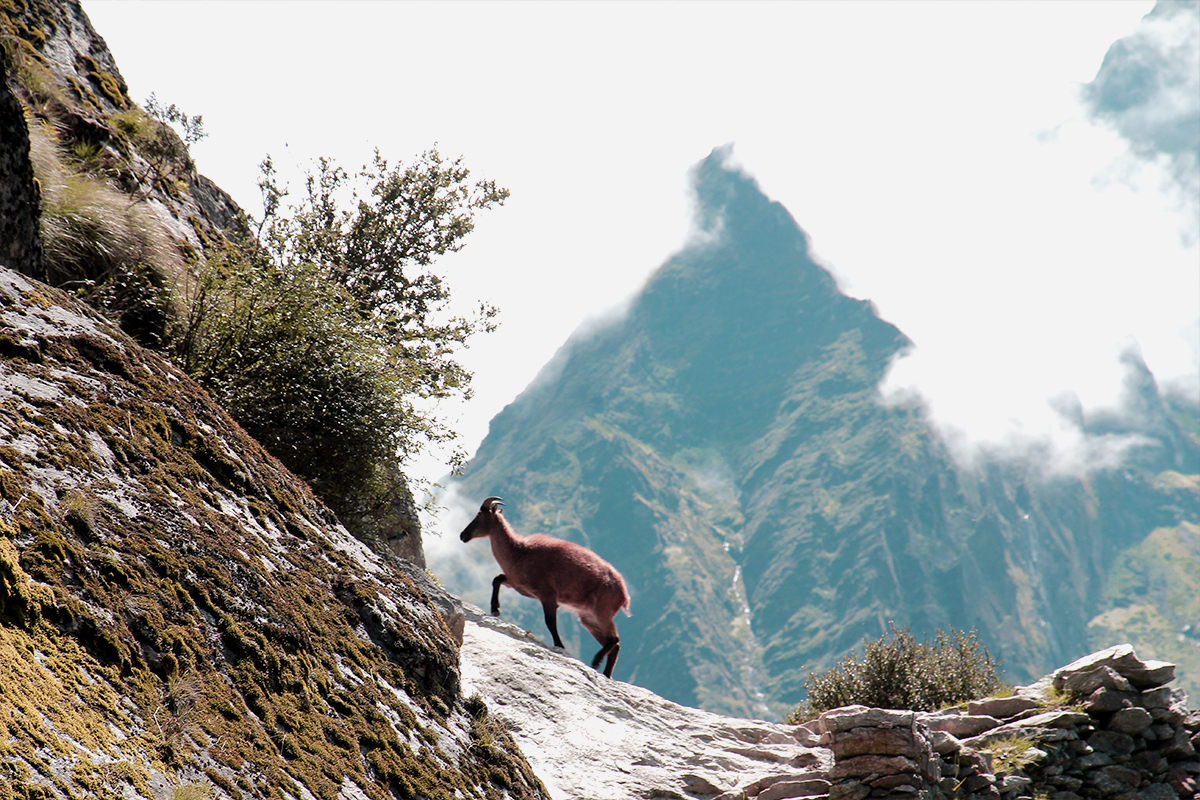
The most interesting factor in the Everest Base Camp trek in March is the clearer skies that offer great views of the Himalayan peaks. The trails are less crowded than in the peak months of April and May, offering a more peaceful and immersive trekking experience. However, the weather can still be quite unpredictable at higher elevations, with the possibility of snowstorms, so trekkers need to be prepared for changing conditions. This early spring also affords the opportunity to see the tail end of winter snow and ice on the trail, adding a unique element to the landscape.
Culturally, for instance, March is good to connect with the locals and their busy preparations for the beginning of peak trekking season. Teahouses or lodges start opening in this season, and the trekkers may get a warm welcome in Sherpa villages throughout the way.
Everest Base Camp Trek in April
April is one of the peak months to head on to Everest Base Camp, and rightly so. The weather in this month is usually stable and more predictable compared to March, with temperatures at lower altitudes ranging from 10°C to 15°C (50°F to 59°F) and between -5°C to 5°C (23°F to 41°F) in higher altitudes. It's a perfect balance of warmth and comfort, making trekking more enjoyable while offering clear skies and crisp mountain air.
By this time of the year, the trails are well established, and the trekking community is in full swing. This is considered the peak time for spring trekking to Everest Base Camp. These offer some of the best panoramic vistas of the trek since Mount Everest, Lhotse, Nuptse, Amadablam, Cho Oyu and other towering peaks are seen without any disturbance caused by clouds. The vibrant colors of blooming rhododendrons and other wildflowers add to the beauty of the landscapes.
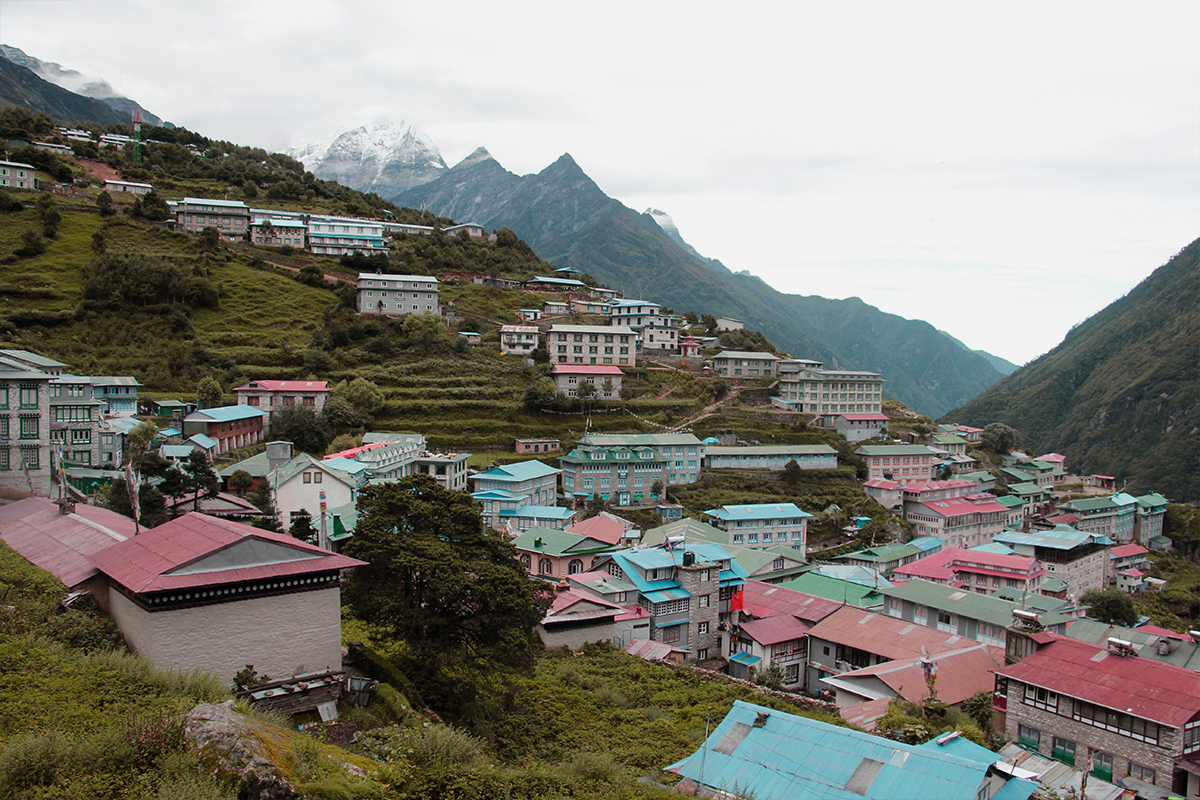
Furthermore, the weather in April is also perfect to ascend to higher altitudes, such as Kala Patthar, a viewpoint from which some of the most spectacular views of Mount Everest are seen. This month is very suitable for trekking because the trail is well maintained and the weather conditions are more stable.
Everest Base Camp Trek in May
May is the last month of the Spring Trekking Season, and it is warm; it has clear skies and favorable conditions for those who are going to the Everest Base Camp trek. Temperatures vary from 12°C to 18°C (54°F to 64°F) at lower altitudes and between 0°C to 5°C (32°F to 41° F) in higher areas. This provides an ideal balance of warmth, which makes trekking more comfortable, while still allowing trekkers to enjoy the majestic mountain views.
One of the biggest advantages of trekking to EBC in May is the stability of the weather. With the monsoon season still weeks away, trekkers can expect clear skies, excellent visibility, and amazing views of the entire Everest Region. The vibrant wildflower bloom, particularly the rhododendron forests, are at its peak, making the scenery even more spectacular.
In May, the trail will be now filled with trekkers from all over the world because it is in the peak spring trekking season. Most of the trekkers do the trek to Everest Base Camp and then up to Kala Patthar to see either the sunrise or sunset over Everest.
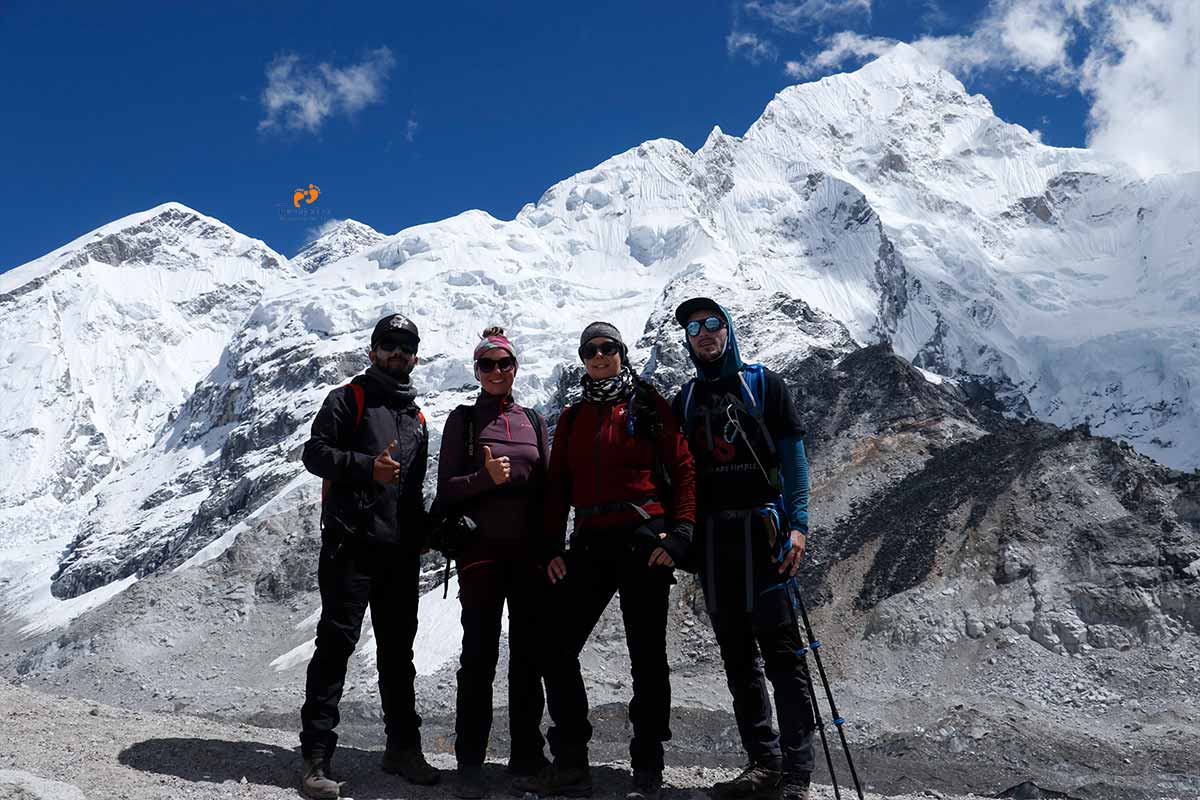
However, trekkers must be aware that the routes via higher altitudes might turn a bit more challenging by May, as it is associated with rising footfall and increasing temperatures, which can degrade the trail conditions in parts of the route. May remains, however, a great time for those who want to thoroughly experience the Everest region before the summer monsoons begin to arrive.
Unique Aspects of Trekking to Everest Base Camp in Spring
Trekking to Everest Base Camp (EBC) in spring offers a combination of natural beauty, cultural vibrancy, and favorable conditions that make it a standout experience. Spring season in Nepal, stretching from March to May, is one of the most popular times to undertake the trek to EBC, and it comes with unique aspects that set it apart from other seasons.
Blooming Rhododendrons and Lush Landscapes
One of the prime features in trekking to EBC during spring is the time when rhododendrons are in full bloom, thereby coloring the route with wild beauty. The hills around get painted red, pink, and white with these flowers. It's just a surreal backdrop for trekkers. Coupled with fresh greenery emerging after winter, the trek takes on magical qualities, especially in places of lower elevation like Lukla, Phakding, and Namche Bazaar. The landscapes are rejuvenated and alive, full of breathtaking views at every turn.
Stable Weather and Clear Skies
Spring is known for its stable weather conditions, especially in April. The trekkers can enjoy the clear blue sky and the magnificent view of the Himalayan peaks: Everest, Lhotse, Ama Dablam, etc. The day temperatures are mild and pleasant to trek without being too hot or cold. Early mornings and evenings might still be cold, but generally, the climate is much more accommodating than it would be in winter or during the monsoon.
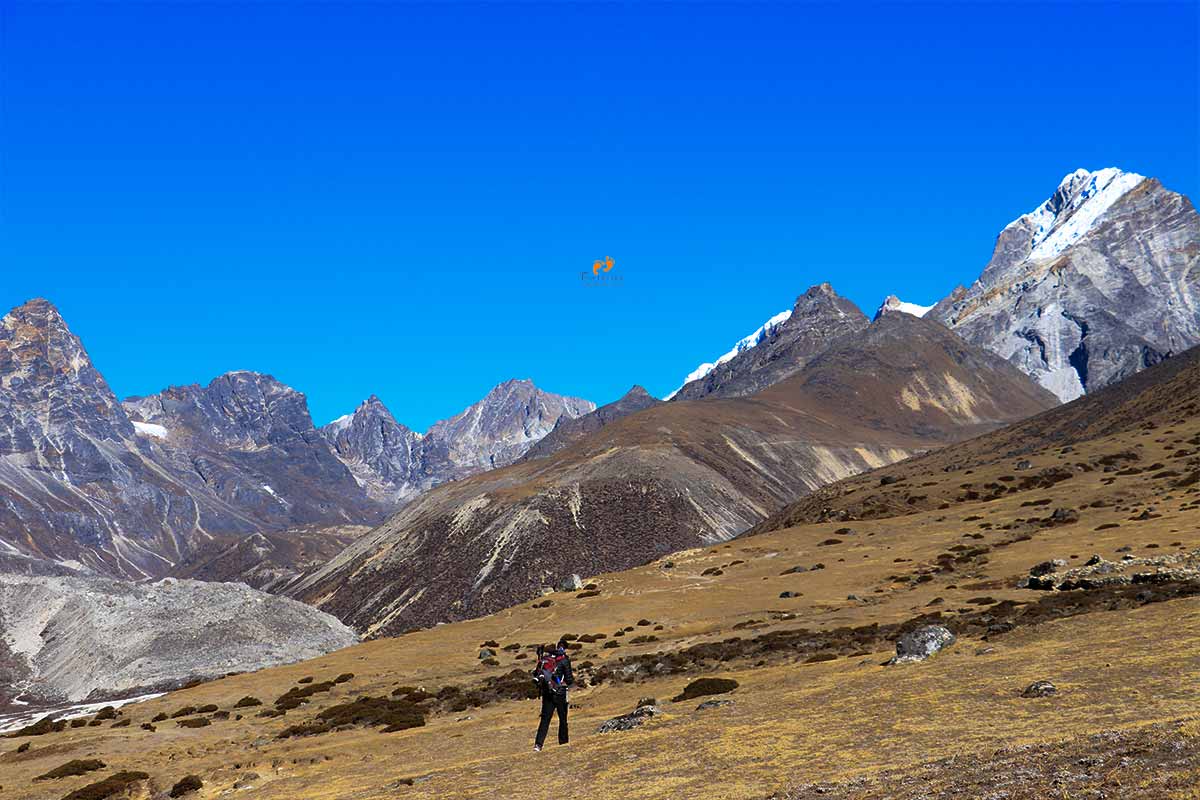
Busy Atmosphere of the Trails
Spring is also a peak climbing season where mountaineers from all over the world prepare for their attempts to summit Everest. This makes the trails take on a unique buzz of activity, especially as you draw closer to Everest Base Camp itself. You will see the hectic activity of expedition teams setting up camps and acclimatizing-a glimpse into the world of high-altitude climbing. It is this lively environment that makes spring quite an exciting time to be on the EBC trail.
Longer Days to Trek
The longer daylight during the spring season allows them to complete the day-to-day distances without any urgency or in great haste. This allows one to walk at a rather easy and leisurely pace and permits adequate time to take in and relish the fantastic mountain views, take photos, or even explore villages. Long daylight hours enhance the entire trek experience by allowing trekkers a comprehensive awareness of nature and culture in the Everest area.
Perfect Conditions for Photography
Spring is the best season for photography, as this period offers crystal-clear blue skies, landscapes in bloom, and dramatic mountain scenery. It is such a time of the year that enriches the natural beauty of the Himalayas with light and colorful trails and the inspiration to get great shots with cameras. Several chances will be available to photograph this beautiful scenery and different trek atmospheres.
Spring is a good time to see various wildlife in Sagarmatha National Park, as this region starts to warm up after winter. Birds such as the Himalayan monal and Danphe pheasant, among other animals like the musk deer and Himalayan thar, are relatively more active during this time. To any trekker who loves nature, these are added attractions that make this trek all the more exciting.
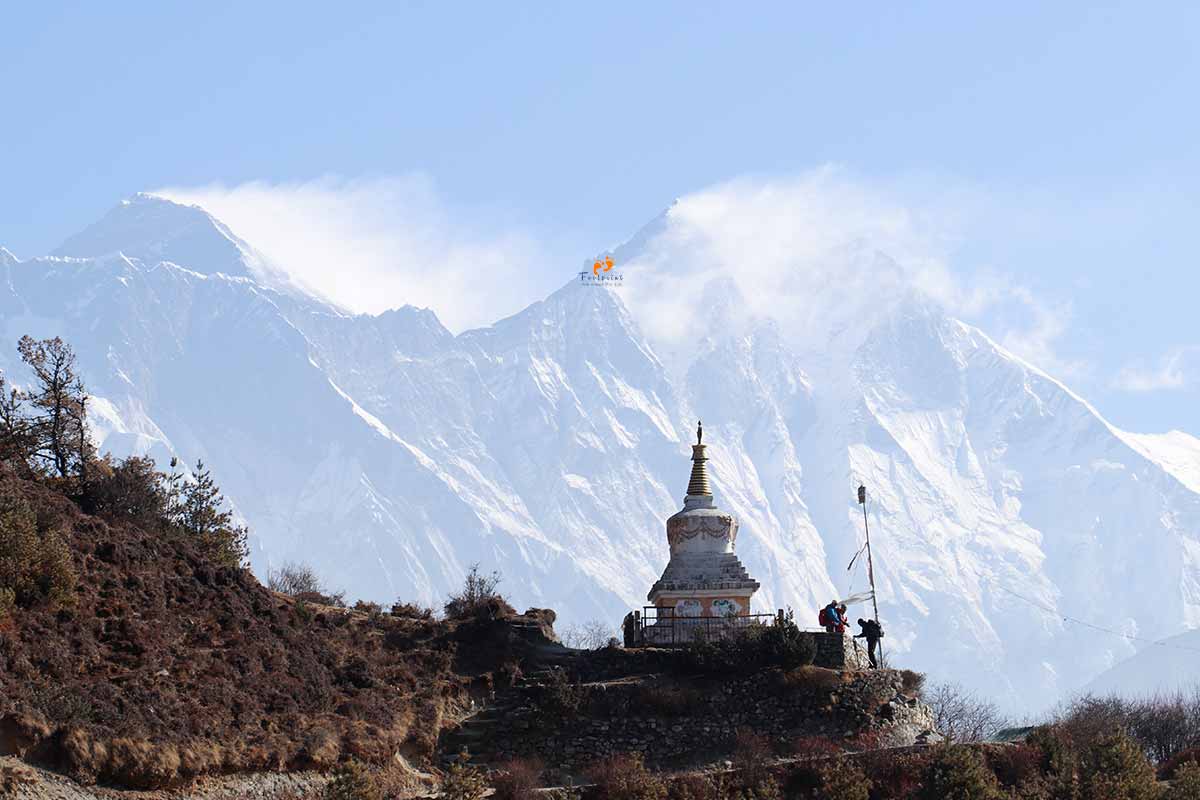
Challenges of Trekking Everest Base Camp in Spring
Although spring is considered one of the best times to trek to Everest Base Camp, due to good weather and brilliant landscapes, there are still several challenges that trekkers may face in this season. Understanding these challenges will help you get better prepared for your adventure:
Increased Trekking Traffic
The months of spring, particularly April, mark one of the peak months for trekking the Everest region. During this time of the year, the trails and tea houses can be a little crowded; especially, areas like Namche Bazaar, Tengboche, and Gorak Shep develop some congestion. The number of trekkers and climbers who come for preparations for Everest Summit, visitors, etc., make it more of a busy experience and somewhat commercialized. Finding overnight stays might be difficult in the teahouses, as they often require sharing rooms or even waiting for space if it's available.
*Note*: It is highly recommended to pre-book your treks with a local travel agency based in Nepal like Footprint Adventure for a smooth and hassle-free travel experience. 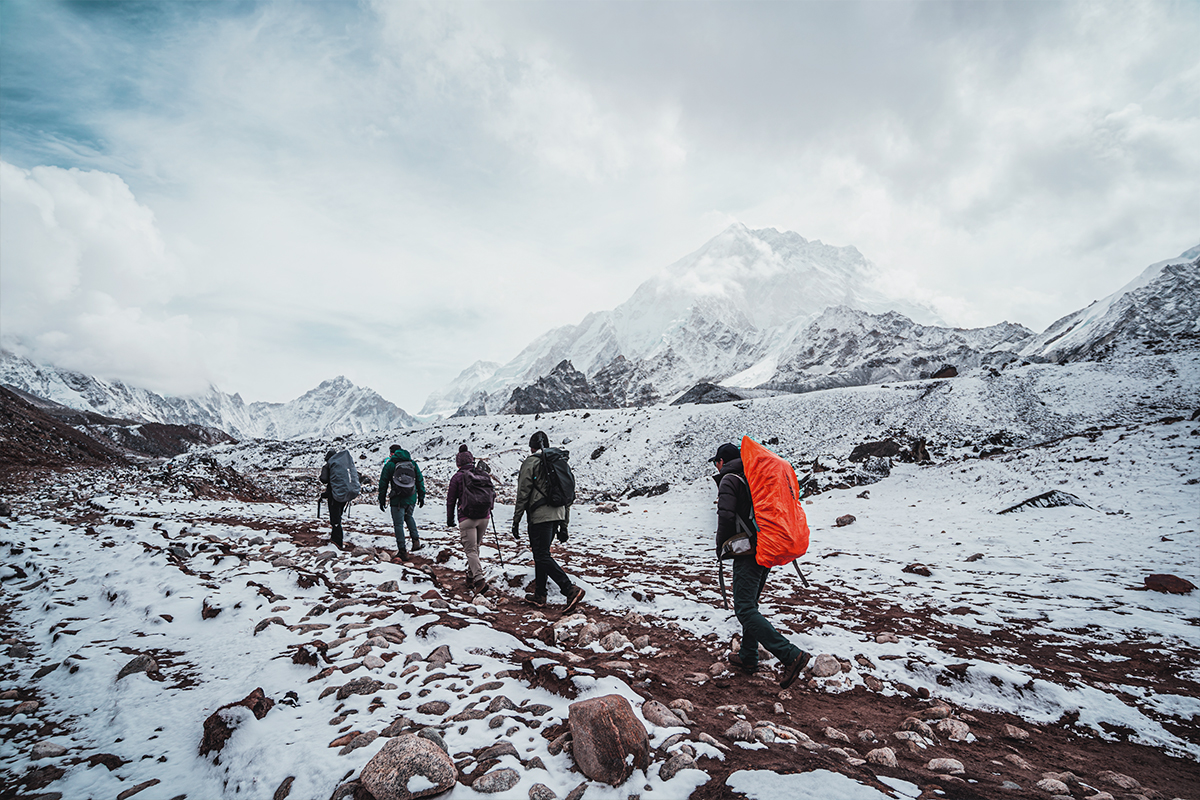
Accommodation Shortages
During Spring, a large number of trekkers makes it hard to find a vacant room in teahouses; this is particularly so in the more popular acclimatization stops like Phakding,Namche Bazaar, Dingboche, and Gorak Shep.
Many of the teahouses could have been booked in advance, leaving a trekker to look elsewhere for accommodation or making them have very basic arrangements. This can be very discomforting, especially after a long day of trekking. When possible, it is a good idea to make reservations in advance or to arrive early in each village to ensure that a place to stay is available. Teahouses in Everest
Variable Costs due to peak season
Due to the fact that Spring is part of the peak trekking season, food, accommodations, and services could be more expensive along the Everest Base Camp trail. Food prices, hot showers, access to the Internet, and other amenities are included. Teahouses and lodges raise prices due to the huge influx of trekkers, which makes this trek more expensive compared to other off-season months. Trekkers should, therefore, be prepared to pay for the increased cost of food, lodging, and other additional services. Things to Know Before Planning a Trek to Everest Base Camp Trek
Limited Amenities
Some of these services could be very limited or stretched thin during spring due to the number of trekkers. Some tea houses do not provide the same kind of service they perhaps do during off-season times, and WiFi might be very slow or just not existent, and electricity can be in very short supply at the higher altitudes. Also, trekkers need to prepare themselves with realistic expectations that their trekking could limit some of these connectivities or conveniences one may have.
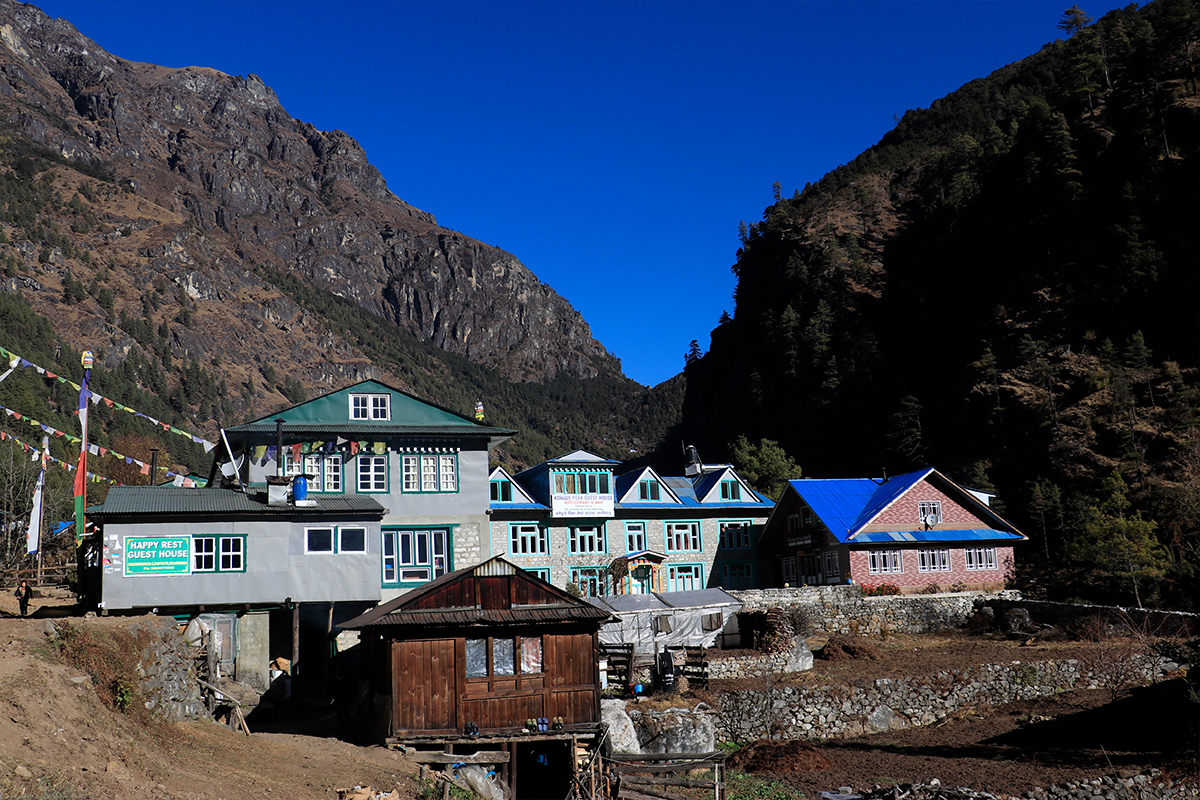
Problems Relating to Altitude
One of the major problems associated with Everest Base Camp Trek relates to altitude. Even in spring, trekkers must be prepared for altitude sickness affecting their body at heights like that of Kala Patthar (5,644.5 meters), Gorak Shep (5,164 meters) and Everest Base Camp (5,364 meters). While the warmer spring temperatures help, acclimatization is still critical, and trekkers must pace themselves carefully to avoid altitude sickness. Symptoms such as headaches, dizziness, and shortness of breath can occur if proper acclimatization measures are not taken. Acute Mountain Sickness and It's Prevention
Unpredictable Weather at Higher Elevations
While spring usually has a more stable weather period, the weather can still be quite unpredictable at higher altitudes. Heavy snowstorms, strong winds, and falling temperatures are possible, especially around the Khumbu Icefall, Everest Base Camp and Kala Patthar. The conditions may vary in terms of trekking: sometimes the trail becomes slippery, and in some places it becomes quite dangerous. Trekkers must be well prepared for such sudden changes in weather and pack accordingly with insulated clothes and gears.
For a detailed insight on What to pack for Everest Base Camp Trek, check out, here.
Changing Trail Conditions
Early spring conditions might make parts of the Everest Base Camp trail muddy or icy, while for the first weeks of April, the trails can be either snow or ice. There is less chance of heavy snow cover than in the winter months, but patchy snow or slippery surfaces may still present a risk. As it gets warmer at higher altitudes, the terrain becomes uneven and tricky, unlike in the dry autumn months, hence more challenging to handle.

Tips for Everest Trek in Spring
With the spring season being one of the most popular times to undertake the trek, it's important to be well-prepared for a safe and enjoyable journey. Here are some essential tips to help you make the most of your EBC trek in spring:
Start Training Before the Trek
The physical preparation for the Everest Base Camp Trek is highly recommended, especially during the spring season when the crowd can make the path even more challenging. You can start training a few weeks in advance to gain strength, stamina, and endurance.
Cardiovascular exercises like hiking, running, cycling, or swimming will gain one better aerobic fitness. Add in strength training to build up leg muscles, as you will be facing steep inclines and trekking for long days.
Finally, add some endurance exercises to simulate the conditions you may go through on the trail with weighted backpacks on long hikes. Flexibility exercises, such as yoga, can also help improve recovery and prevent injuries in general. The better physically prepared you are, the more this time on the trail will not feel so labored while out on the trail.
Acclimatize Properly
Acclimatization is one of the most important components of avoiding altitude sickness, to which there is still a considerable risk out of season. Ascending at higher altitudes, such as Gorak Shep at 5,164 meters and Everest Base Camp at 5,364 meters, your body should be acclimatized with time to the thinner air. Follow the acclimatization schedule recommended that includes rest days in towns such as Namche Bazaar and Dingboche, among others. Ascend little by little, drink a good amount of water, and avoid strenuous activities. Be aware of altitude sickness; headaches and dizziness are symptoms, so seek assistance if the symptoms start getting worse.
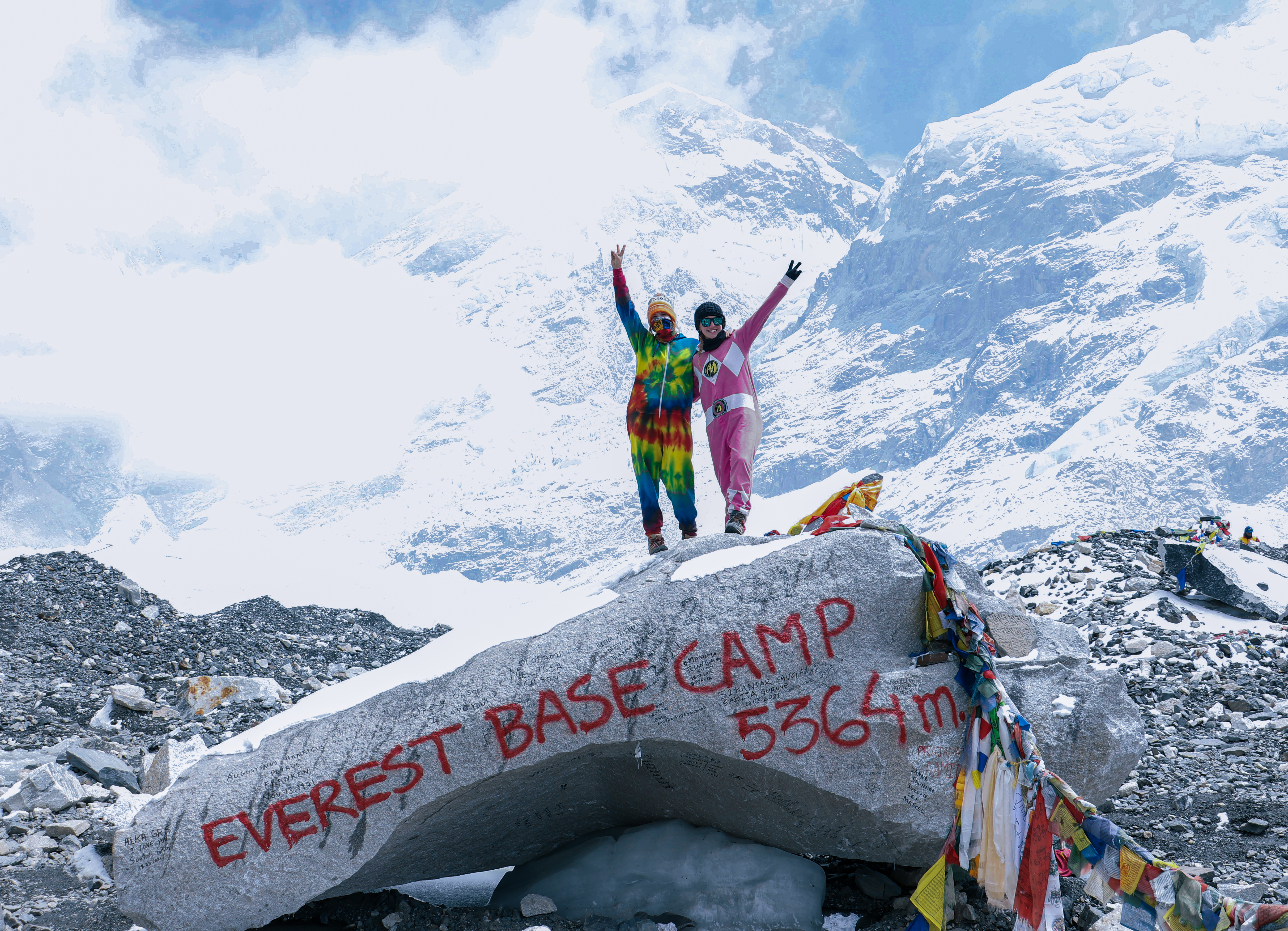
Keep Your Body Hydrated and Energized
Dehydration can easily turn into an issue at higher altitudes once you have been trekking for hours. Spring brings warmer temperatures at lower altitude elevation, but as you get to the higher parts of the trek, the air gets dry; this may increase the chances of dehydration.
Drink plenty of water throughout the trek and carry a water bottle or hydration system to stay hydrated. Additionally, pack energy-dense snacks like nuts, dried fruits, and energy bars to keep your energy levels up during the day.
Learn more about: A Complete Guide to Water Purification While Trekking in Nepal
Go With The Flow And Pace Your Trek
Even if the weather favors your side, trekking up to EBC isn't that easy. Pace up with yourself, taking as much time as needed, and stopping whenever required. Make sure you never hurry during the whole trek, and also never rush up towards altitude gains. This frequent stop-esp at a picturesque spot-allows the process of acclimatization apart from letting you truly cherish such beauty amidst landscapes on the way. Remember, it is always good to take a bit longer in order to reach EBC safely and not risk overexertion. Here, is a quick guide: Fitness for Everest Base Camp Trek.

Book Your Flights and Accommodation Early
Since spring is a peak season, flights to Lukla and accommodations in Kathmandu and along the trekking route can get booked up quickly. It's advisable to book your flights and accommodation well in advance to avoid last-minute stress. Additionally, if you’re trekking with a group or guide, confirm all arrangements ahead of time to ensure a smooth experience. Read more about Lukla Flight Cancellations.
While spring generally offers ideal weather for trekking, conditions at higher altitudes can still change unexpectedly. Check the weather forecast regularly, especially if you're getting close to the higher parts of the trek. Be prepared for sudden drops in temperature, windstorms, or light snowfalls, and pack accordingly. It's important to be flexible in your mind and adjust your plans if necessary, especially when weather conditions affect trail safety.
Respect Local Culture and Environment
The Everest Region is the cultural home of the Sherpa people, and their culture and traditions are an important part of the trekking experience. Be sensitive to the customs of the locals and respect the people and their way of life. Be a responsible trekker and follow Leave No Trace principles: dispose of trash properly, avoid disturbing wildlife, and respect the environment so as to help preserve the natural beauty of the Everest region for future trekkers.
Trekking in the Everest region, high altitude, unpredictable weather, and uneven terrain expose one to several risks during the trek. It is better to be covered by a comprehensive travel insurance policy including emergency evacuation cost, treatment cost, and trip cancellations. Ensure your insurance policy covers you for high-altitude trekking and possible emergency evacuations.
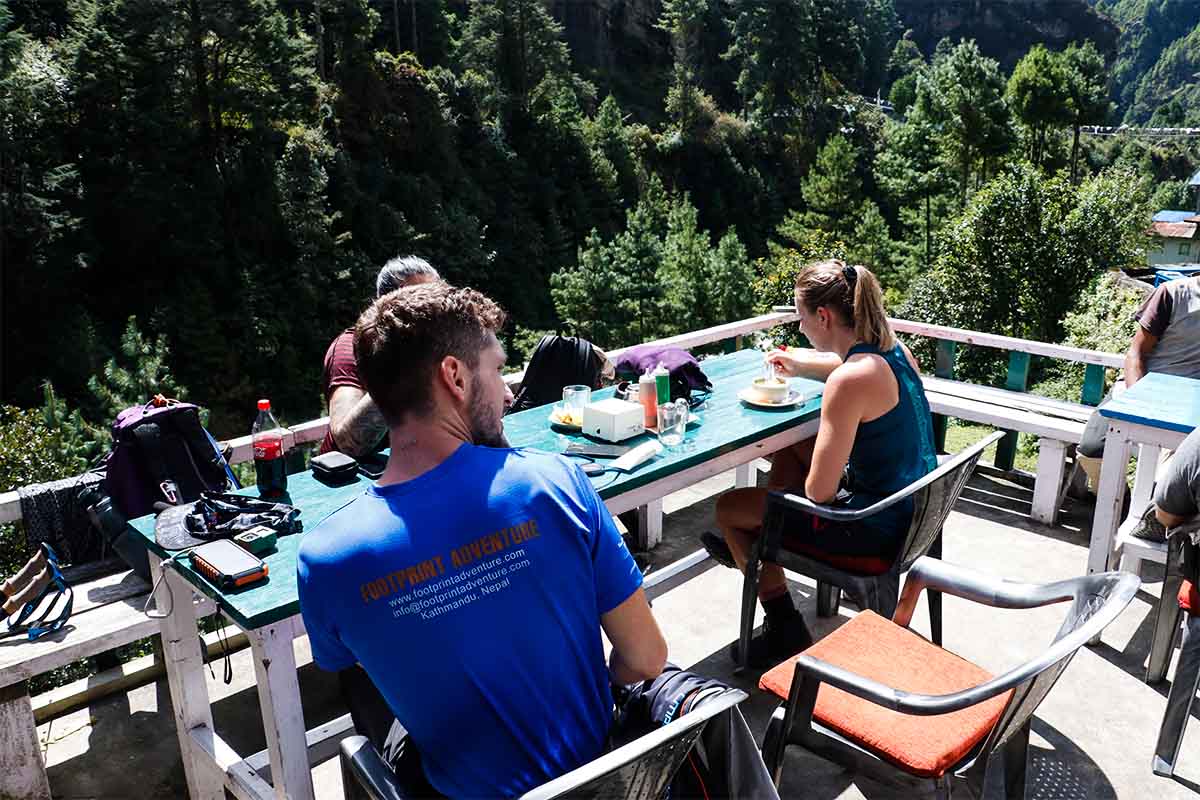
FAQs
Which month is best for Everest Base Camp Trek?
The ideal months for the Everest Base Camp trek are usually April and October of the year, respectively, because these two months fall in the spring and autumn seasons. Both months have stable weather conditions, clear skies, and provide good visibility. But each season has its own charm: spring shows blooming rhododendrons, while autumn has crisp air and slightly cooler conditions.
Is April a good time to hike the Everest Base Camp?
Yes, April is a pretty good time to go trekking in Everest Base Camp. Generally, the weather remains stable, with moderate temperatures and clear skies providing spectacular views of the surrounding peaks. Besides, flowers, particularly rhododendrons, add color to the landscape as the region becomes vibrant. It's the busy season, though; hence, expect more trekking traffic and plan accordingly for accommodations.
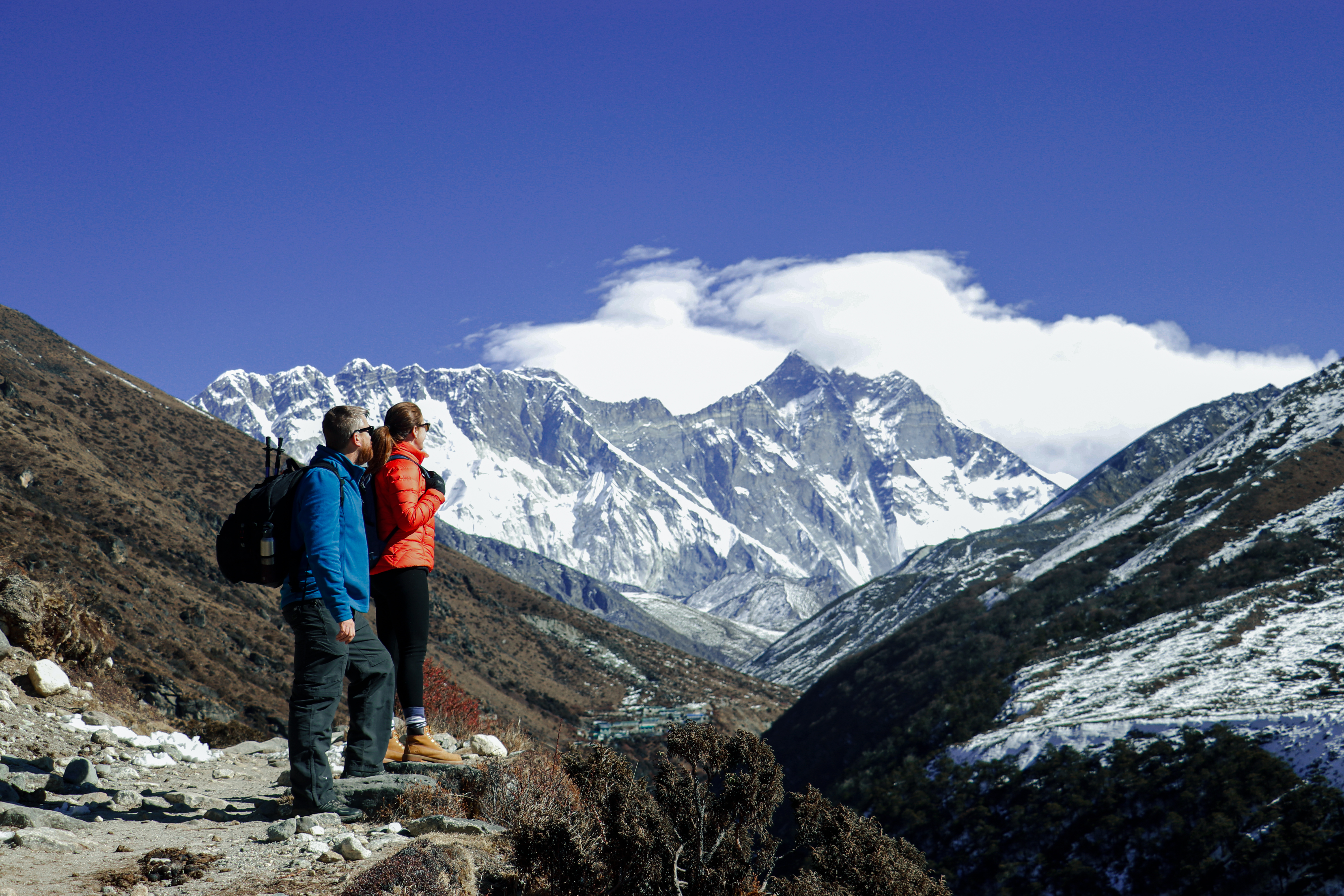
Can you hike to Everest Base Camp in March?
Yes, it is possible to make Everest Base Camp in March because the spring season starts this time of the year. While it is still cold in the higher altitudes, weather starts to improve with an extended number of daylight hours. The trail will be less crowded as compared to April, so for those who don't want the crowds, at the same time enjoy spring there.
How cold is it at EBC in Spring?
Nights are cold at Everest Base Camp during spring, and temperatures range from -6°C to -12°C (21°F to 10°F), while daytime temperatures at EBC are quite decent, averaging around 5°C to 10°C (41°F to 50°F). Lower altitudes get way warmer, but higher altitudes stay really cold, so clothes need to be layered.
Is EBC better in May or October?
Both May and October are suitable for trekking, but it depends on one's preference:
- May: The tail end of spring offers warmer weather with vivid landscapes. However, the pre-monsoon clouds start to appear at times.
- October: Colder but stable weather with crystal clear skies perfect for mountain scenery. Autumn trails are somewhat drier and less muddy.
Everest Base Camp Trek in October (Must Read)
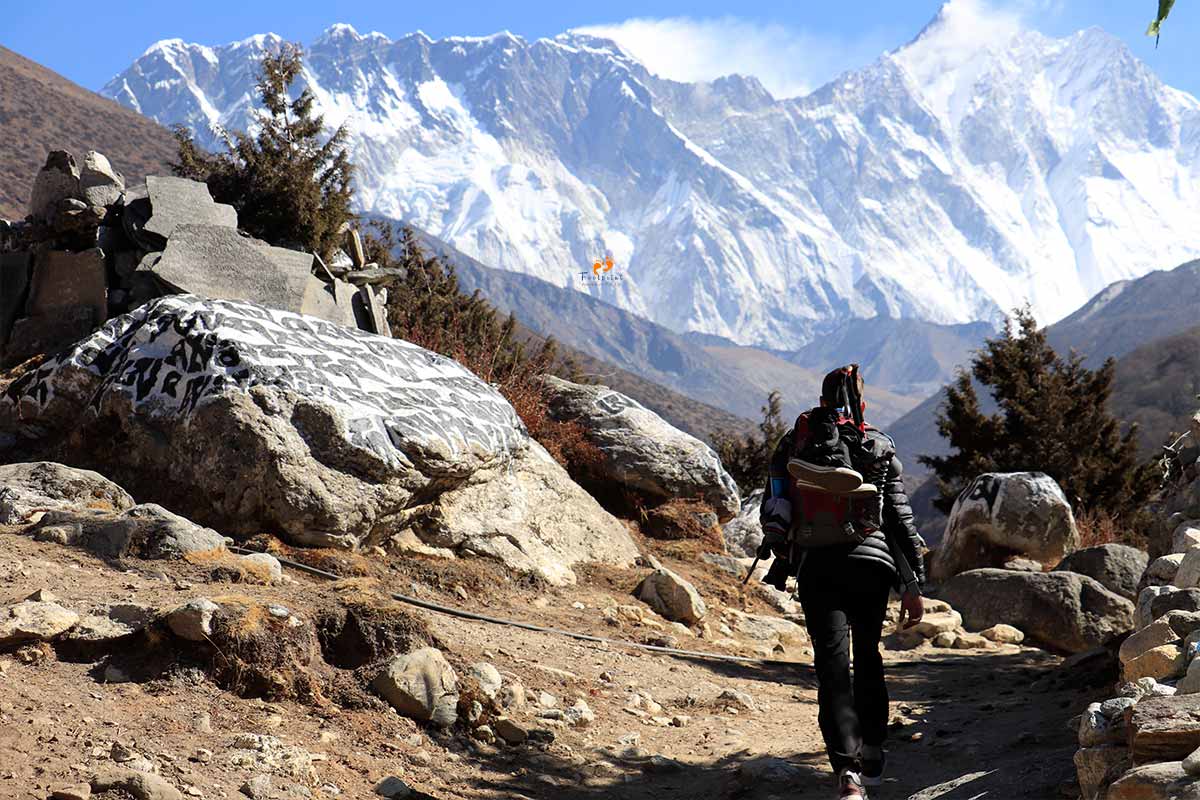
Is EBC doable in March?
Yes, the trek is quite doable in March. Even though the temperatures are usually cold, especially at night, it is accessible on trails, with fairly stable weather. It is also a good time to go if you are a trekker not wanting crowds that begin in April, yet enjoy springtime scenery.
When should I go to EBC?
The best time for the Everest Base Camp trek is during spring-which falls in March to May-or autumn, which is from late September to November. These periods present the best weather conditions, great views, and comfortable trekking experiences. You can choose spring for its landscape of blooms and mild weather, or autumn for its clear skies and crisp air.
